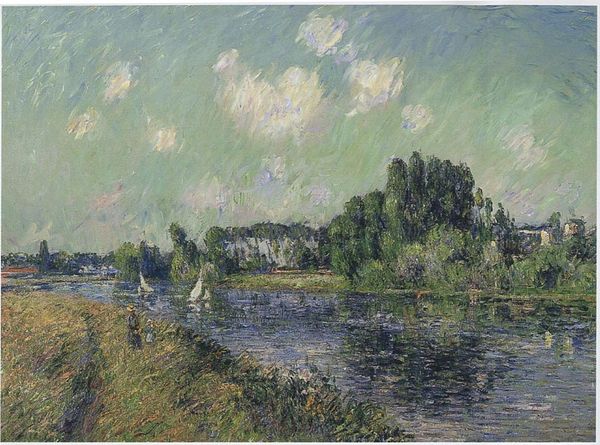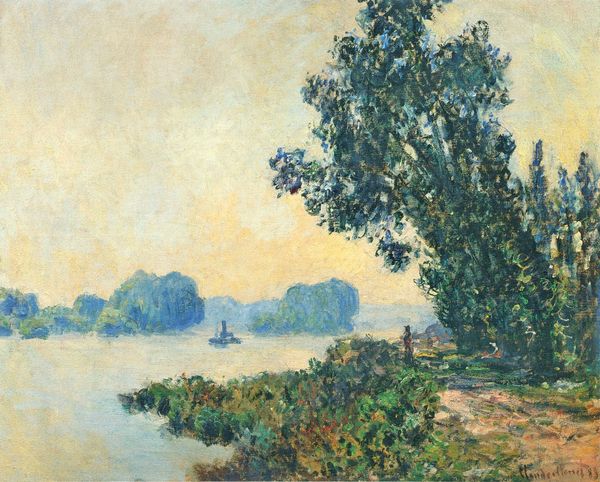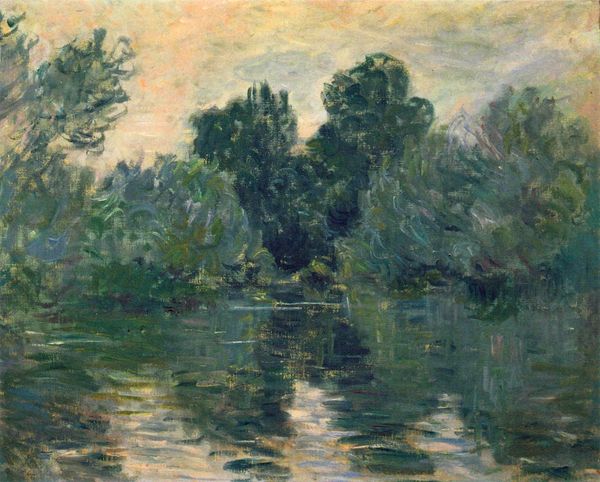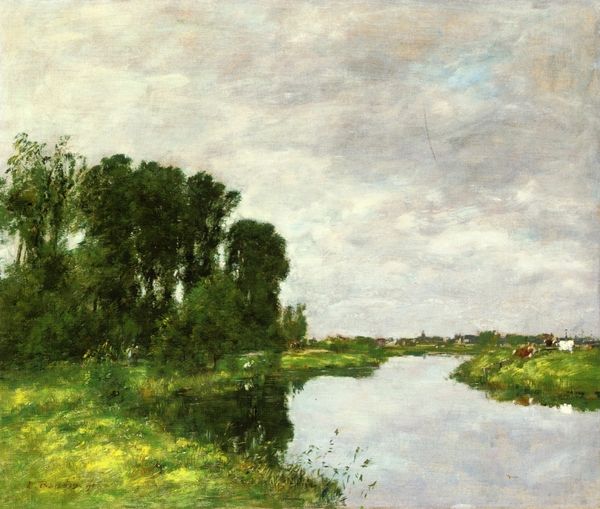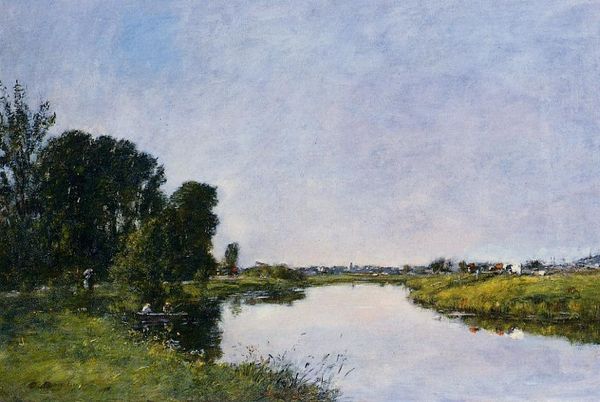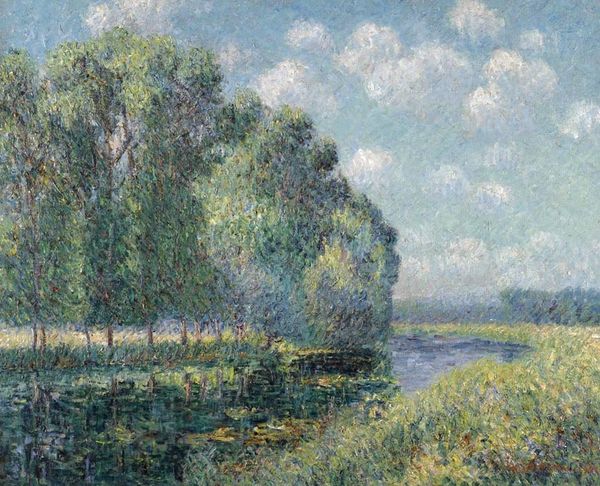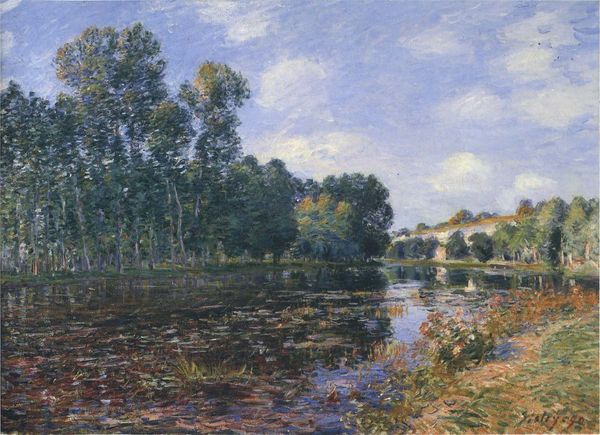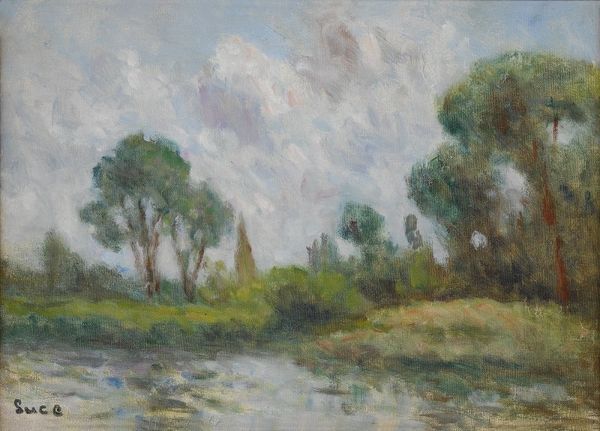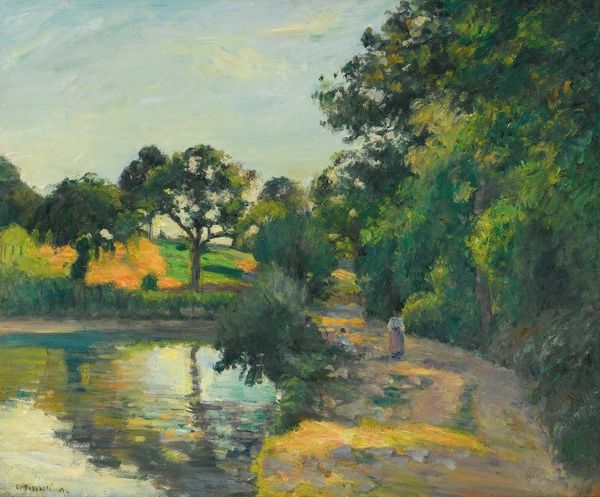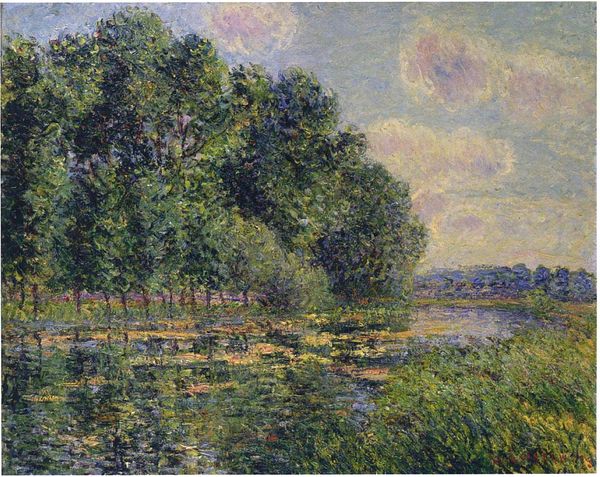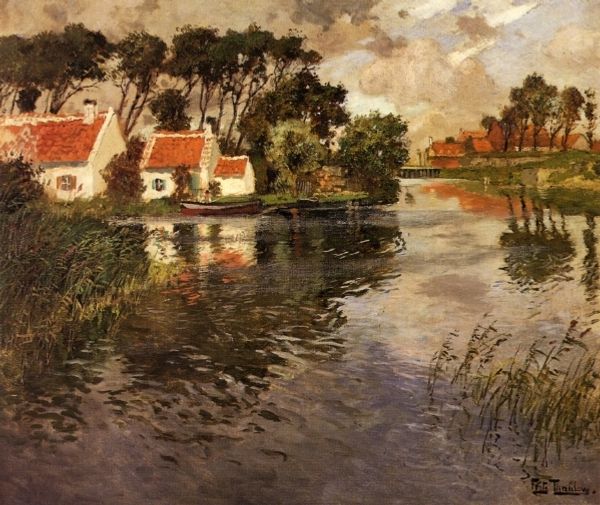
painting, plein-air, oil-paint
#
painting
#
impressionism
#
plein-air
#
oil-paint
#
neo-impressionism
#
landscape
#
river
#
impressionist landscape
#
nature
#
oil painting
#
seascape
#
cityscape
#
post-impressionism
#
naturalism
#
natural environment
Copyright: Public domain
Editor: Here we have Maximilien Luce’s oil painting, *Landscape Around Mantes*. The textures seem to blend into each other. I am immediately drawn to the brushstrokes that almost seem to vibrate. How would you interpret this piece from a formal perspective? Curator: Well, initially, observe how Luce meticulously constructs the composition. Note the strategic placement of the trees—how they almost mirror the distant structures, establishing a dialogue across the pictorial space. It beckons analysis of the canvas, almost inviting semiotic deconstruction, wouldn’t you say? Editor: Yes, I see that! The contrast in the reflection on the water leads your eye to different corners. It’s like he’s carefully controlling where the viewer looks first. Curator: Precisely! Luce guides our gaze, constructing a visual pathway. Focus now on the materiality of the paint itself; notice the distinct daubs and their layering. This deliberate texture generates not only light but depth, disrupting a purely representational reading of the landscape. How do you consider Luce using colour? Editor: The palette seems muted, but it works with the way he handled texture to create atmosphere, there are touches of oranges, yellows, and browns in the clouds. It creates a harmonious but tranquil effect! Curator: The harmonious colors serve to highlight form. His emphasis isn't on colouristic flamboyance, but on structuring the landscape via nuanced tonal relationships, that give off a subtle but affective pictorial construction. Now think about how structuralist readings challenge notions of inherent meaning. What aspects does this bring forth when thinking of landscape? Editor: It makes me think about how every element works to build a larger whole. Thanks, it really highlighted nuances that I previously hadn't noticed. Curator: Absolutely. Approaching art through form grants acute ways of understanding artistic meaning and design.
Comments
No comments
Be the first to comment and join the conversation on the ultimate creative platform.
